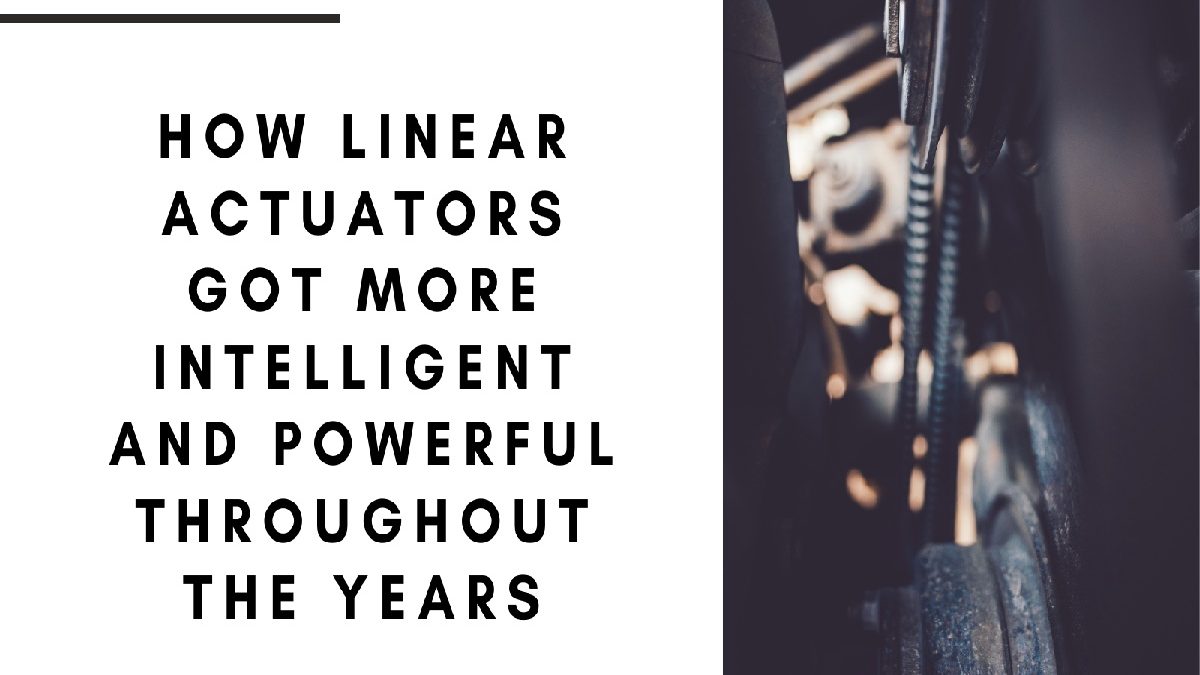The very first linear actuators were pretty different from those solutions that we use nowadays. However, the principle of their work was the same: they had to create linear motion. The very first tool that could create linear motion was a steam engine. They were used in Ancient Rome but the first steam engines that could be called the ancestors of linear actuators were developed just in 1670-ies by a French inventor Denis Papin.
Only in 1800-ies, the air compressor was invented. It moved compressed air in cylinders. This was the very first prototype of modern pneumatic cylinders. The first pneumatic cylinder was invented in 1990-ies. The invention of hydraulic cylinders followed soon after that. During World War II, both types of cylinders were widely applied in the brake systems of vehicles.
One of the turning points in the history of linear actuators was in the 1960-s when the first digital control devices were applied to control pneumatic and hydraulic linear actuators. With them, the application area of actuators expanded significantly. So, actuators became common to control pressure in piping systems and many more applications.
Electric linear actuators took time to be developed. The first prototype of a modern linear actuator, such as those made by Progressive Automations, was developed by Lene Jensen in 1979.
Linear Actuators Today
Now, linear actuators are very varied. They can have different power, be of different sizes, have different protection levels, and similar. While pneumatic and hydraulic actuators are still used, in many applications, they were replaced by electric actuators. The main reason is plenty of benefits that electric actuators bring. Among the most significant pros we would mention the following:
- Linear actuators provide the top precision positioning and movement level. This feature makes them irreplaceable in areas where precision and accuracy are crucial: medicine, robotics, packaging, manufacturing, pharmacology, and similar;
- You don’t need to maintain them. Electric actuators are pre-lubricated and don’t require any oil or other liquid replacement. It makes them extremely convenient. In some fields, such as the aerospace industry, this feature is crucial.
- Electric actuators can be of very small sizes. It makes them perfect to apply in such fields as robotics and medicine, especially for surgeries.
- These actuators are ecologically friendly. There is no hydraulic liquid that can leak and contaminate the environment. No oil replacement is needed, thus, there is no need to utilize old oil. Also, electric actuators work from clean energy.
- These items are extremely easy-to-manage. They can be handled with a remote control, a relay, etc. There are plenty of options to control electric actuators, you can explore them on any website of a reliable actuator manufacturer. You can choose wired or wireless options. You can opt for controlling one actuator only or an entire actuator system.
As we can see, linear actuators have made a long way. Now, those are advanced devices that can be used in plenty of applications. Without linear actuators, manufacturing and production, home automation, robotics, and many other industries would not exist in their modern forms.
Author Bio
Hayley Mann is a technology enthusiast specializing in automation methods of ergonomics devices. Her engineering background helps her to create interesting articles on technical topics, making them understandable for all readers.

